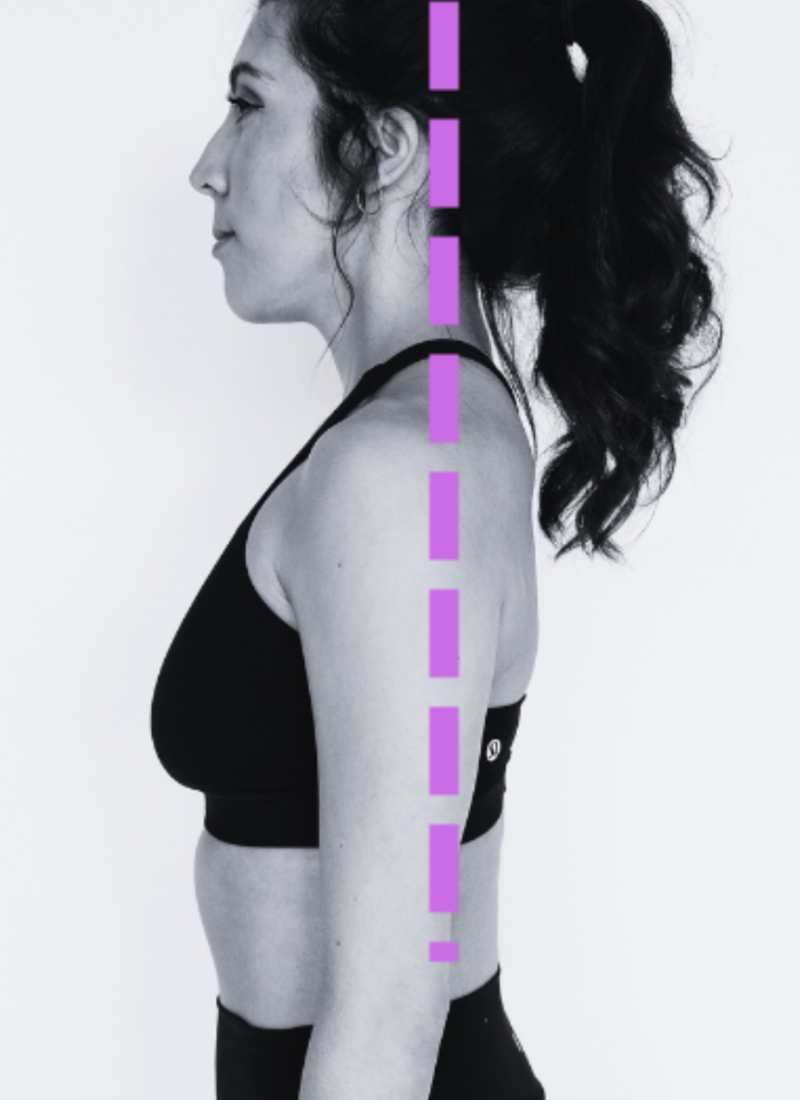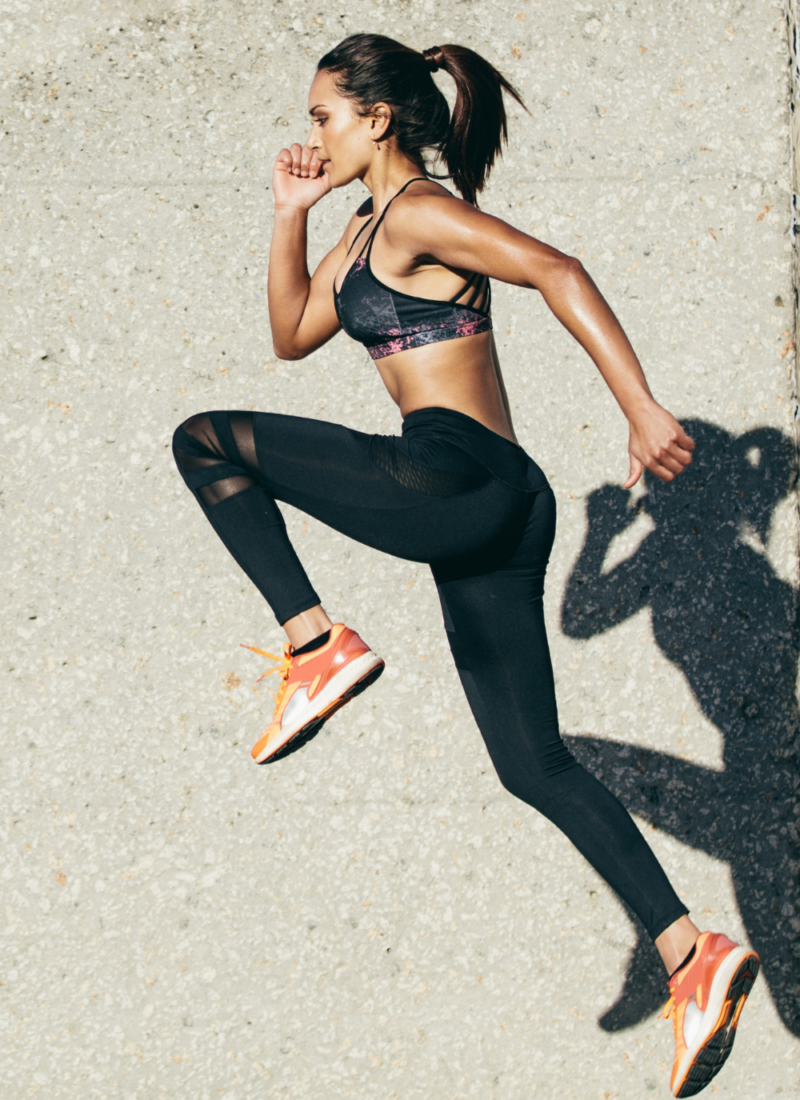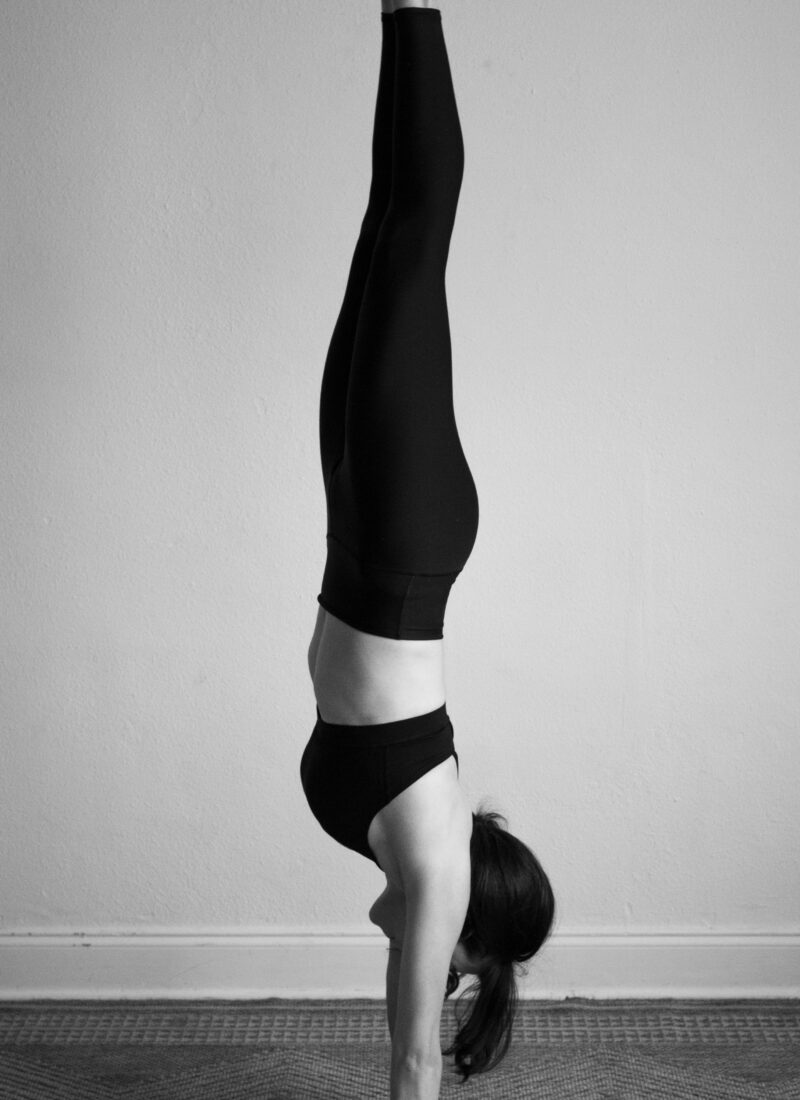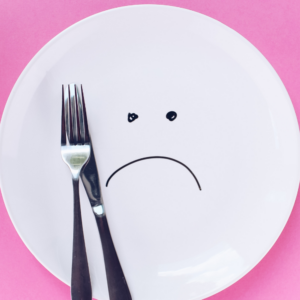Should you workout on your period? Although oftentimes exercise can alleviate some of the discomforts from our menstrual cycles, there are a few things to be aware of. Keep reading to learn more about the science and wisdom about why you should or shouldn’t workout on your period.
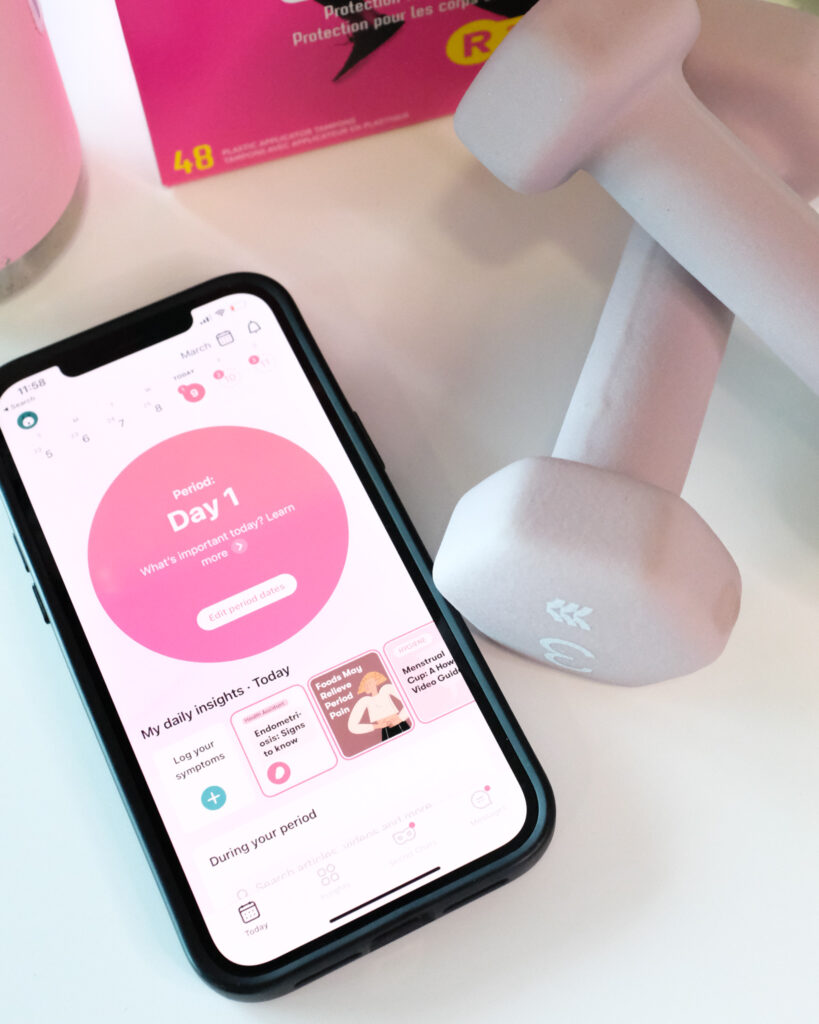
In this article we will discuss:
- What Happens to Our Bodies When We Exercise During the Menstrual Cycle
- Benefits of Exercise While on Your Period
- What are the Best Exercises While on Your Period?
- What Exercises Should Be Avoided While On Your Period?
- How to Mitigate Menstrual Pain and Other Symptoms
- How to Workout On Your period: Tips You Need to Know
- How to Tailor Your Fitness Routine to Your Menstrual Cycle
The following content may contain affiliate links. When you make a purchase using these links, I receive a commission at no extra cost to you. Thank you for supporting this website.
What Happens to Our Bodies When We Exercise During the Menstrual Cycle
So it’s that time of the month – your period, otherwise known as menstruating where the uterus is shedding the lining it has built up throughout the month. The day your period begins is considered Day 1 of the entire menstrual cycle, and the period typically lasts 3 to 7 days.
It is very common at the beginning of your period for progesterone and estrogen levels to be at their lowest. This, combined with loss of blood, makes many women feel more tired than usual. Over the next few days that follow, these hormone levels will gradually increase.
On these days of low energy, you may not feel like working out at all and that is ok! Listen to your body when you feel it needs rest. On the other hand, if you feel up to training, there is no medical reason not to. Ultimately, it is up to you, but if you’re feeling low energy it is a good idea to reduce the intensity of your workouts.
Benefits of Exercise While On Your Period
For many of us, exercise feels like the absolute last thing we want to do while on our period. According to research, however, doing light exercise on your period can help with a variety of unwanted associated symptoms such as pain, cramps, bloating, irritability, fatigue, and nausea.
Many of us experience anxiety, moodswings, and depression during our menstrual cycles but exercise can help. Exercise is known to produce endorphins, otherwise known as the chemicals that make you feel happy, which can counter all of the “PMS” we hold so dear to us – not.
What Are the Best Exercises While On Your Period?
During your period, it is best to do things you know you can tolerate. Some examples include:
Walking
Walking is a very beneficial form of exercise that can be done at any phase of the menstrual cycle. Especially if you are a regular runner or jogger, walking may be a good, low-intensity alternative to your typical training regime. If you don’t feel like walking, don’t fret! There are so many other forms of active recovery exercises you can do.
Light Stretching or Yoga
It is highly likely that a full-on, sweaty workout session doesn’t feel right for your during your period due to the increased fatigue that is so common during this cycle. Therefore, you may feel like taking it a little easy with some feel-good stretching or yoga. In fact, a 2016 study suggested that yoga can help relieve cramps and distress associated with being on your period.
Strength Training You Can Tolerate
It is ok to continue to weight train if that is what you typically do. However, due to the increased fatigue commonly associated with being on your period, it is wise to keep your weight training at what you’re used to or even reduce the weight.
What Exercises Should Be Avoided While on Your Period?
Although there is no scientific evidence that your performance can be negatively affected by your period, you may still want to alter your normal routine so that it feels best on your body. Here are some exercises you may want to avoid:
Strenuous Exercise
This is variable across individuals, but it could mean anything that is more intense than what you usually do. You don’t have to stop your normal training, just be cautious as many women feel more fatigued during menstruation.
Inversions or Handstands
Some believe, especially in the yogi world, that going upside down interrupts the natural flow of the period. This could be during handstands, headstands, and other inversions. This may cause the menstrual flow to go back up into the uterus and lead to worsening cramping. As always, do what feels good for your body and stop doing what feels bad.
Anything That Doesn’t Feel Good For Your Body
Lastly, if you feel unusually fatigued, nauseous, or there is an increase in pain or discomfort, stop what you are doing and rest.
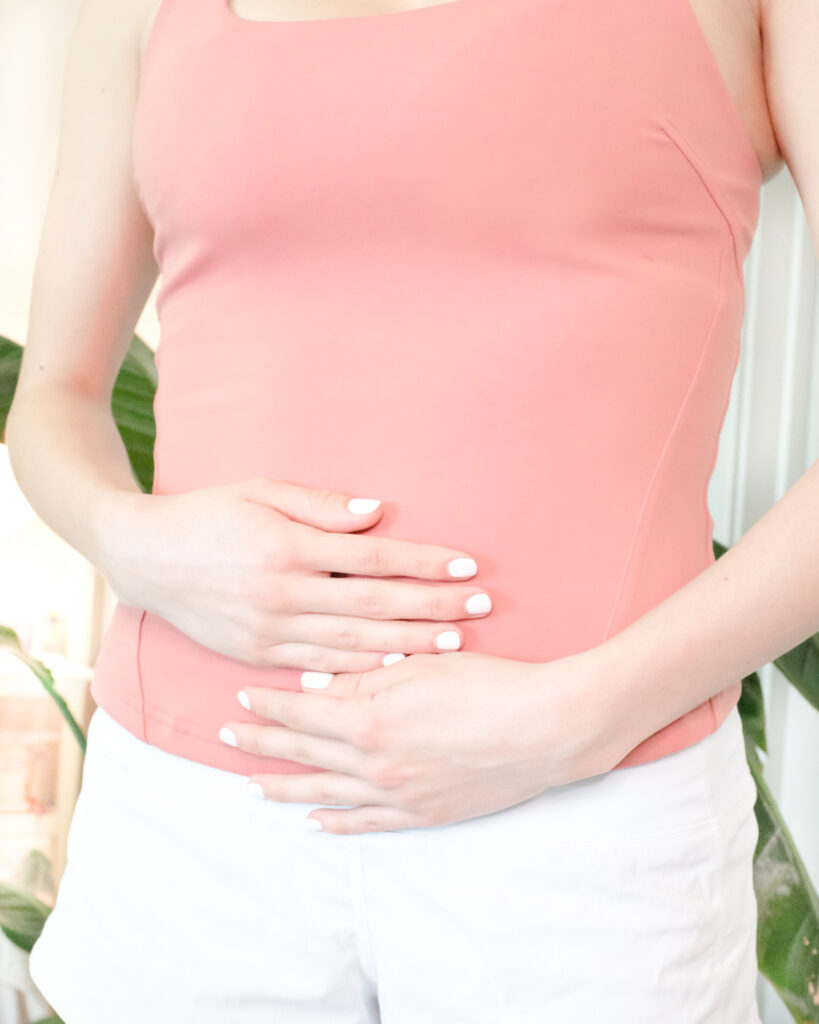
How to Mitigate Menstrual Pain and Other Symptoms
If you experience menstrual cramps there are some remedies you can try.
Home Remedies
- Apply Heat: Taking a hot bath or using a heating pad to your low abdomen or back can help with cramps.
- Reduce stress: Psychological health can help with physical health. Related Post: Easy Ways to Deal With Stress
- Exercise: This may seem counterintuitive but exercise helps relieve cramps! According to research, doing light exercise on your period can help with a variety of unwanted associated symptoms such as pain, cramps, bloating, irritability, fatigue, and nausea.
Alternative Medicine
- Acupuncture: According to the Mayo Clinic, acupuncture can help relieve pain associated with menstrual cramps.
- Herbal medicine: The Mayo Clinic states, “Some herbal products, such as pycnogenol, fennel or combination products, might provide some relief from menstrual cramps.” It is worth discussing with your doctor if that is a good option for you!
How to Workout On Your Period: Tips You Need to Know
1. Wear Dark Pants
This might seem silly, but this is an extremely important tip! You will never regret wearing dark clothes – especially if you have a little you-know-what period accident.
2. Use Sport-Specific Menstrual Products
I highly recommend Playtex Sport Tampons if you are getting really active during your period as they are the most comfortable for exercise in my opinion. These are also great for swimming, beach days, and more. In general, I don’t recommend wearing pads during exercise because they can be a little, well, messy.
3. Listen to Your Body
This is easier said than done. Getting in tune with one’s body takes practice. Seasoned athletes are likely very aware of their limits, but if you’re a newbie, you may not know when to push yourself and when to take a rest. If you feel pain, dizziness, shortness of breath, or other bad symptoms that give you a gut feeling to chill, that is your sign to rest.
4. A Little Movement is Better Than No Movement
Just remember even only showing up to the gym is a win! You may not have run a marathon but going for a walk is how to build the habit of living an active lifestyle.
5. Hydrate a Little Extra
If you’re drinking water this can help mitigate bloating. In fact, a 2021 study found that women who increased their fluid consumption as compared to women who did not change their daily water consumption reported less menstrual cramp pain and they became 300% less likely to take a painkiller.
6. Allow Yourself to Take a Painkiller
I personally avoid taking medication if I can and you may be the same way as me where you don’t like pills. You may be able to avoid painkillers with proper water consumption. However, if all else fails, you can bet I take the occasional ibuprofen and it helps wonders. No one should have to endure terrible discomfort. Be sure if you take any medication to take it as directed on the label.
How to Tailor Your Fitness Routine to Your Menstrual Cycle
Something not many people think about is how their bodies and athletic abilities can fluctuate with their hormones. As women, our hormones are in constant fluctuation throughout the entire menstrual cycle. One way to live our best, active lives, even with the inconvenience of periods, is to go with the flow. (Get it?)
The first step to tailoring your fitness routine with your period is to get to know your menstrual cycle by tracking your period. You could do this by marking your period dates on a calendar, however I personally use the period tracker app called Flo. There are many, many options to track your period out there, even in the Health app that comes with Apple iPhones.
Period tracker apps help break down each phase of the menstrual cycle: menstruation, the follicular phase, ovulation and the luteal phase.
Each phase is characterized by different levels of hormones which can affect your mood and energy levels. Therefore, athletes and fitness connoisseurs can plan there routine around the phases of the menstrual cycle.
Of note: If you have an irregular period, meaning your periods are unpredictable, this may not be possible for you.
Breaking Down Each Phase of the Cycle
Phase 1: Menstruation – Days 1 to 5
During this phase, you gotta go with the flow. At this time, the uterus is shedding its lining. As stated above, do what feels good on your body. Some trainers even say this is a good time to do strength training exercises – if you’re feeling up to it – as this phase of the cycle is characterized by high levels of testosterone.
Phase 2: Follicular Phase – Days 6 to 14
After your period and before ovulation, your estrogen levels go up which means more energy! During this phase, the uterine lining thickens and follicles in the ovaries grow, forming a mature egg. Due to the higher energy levels, this is a perfect time to up the intensity of your workouts. This can include HIIT workouts, boxing, or bootcamp classes, for example.
Phase 3: Ovulation – Days 15 to 23
For your information, the days of ovulation are your fertile days – meaning the ovary releases an egg. Hormone levels can vary at this time. Estrogen may go down and progesterone goes up. FYI: Higher levels of progesterone can contribute to muscle breakdown.
Depending on your hormone levels, you may or may not feel like doing the same high-intensity workouts as before, so you can switch it up with some moderate intensity routines such as strength training and long, steady-state cardio such as running, cycling, swimming, or brisk walking for 30 to 45 minutes.
Phase 4: Luteal Phase – Days 24 to 28
During this phase, the egg begins to travel through the fallopian tubes. Your estrogen and progesterone levels start to go down during the luteal phase, so now’s the time to wind down in your fitness routine. Try focusing on your form, doing yoga, or going for slow runs. And don’t forget to drink plenty of water as your body prepares to go into the menstruation phase.
The Bottom Line: Do What’s Right For You
No one knows your body better than you do. In general, working out on your period won’t affect your performance, unless you’re having extremely heavy bleeding. Listen to your body and know when it is time to rest.

